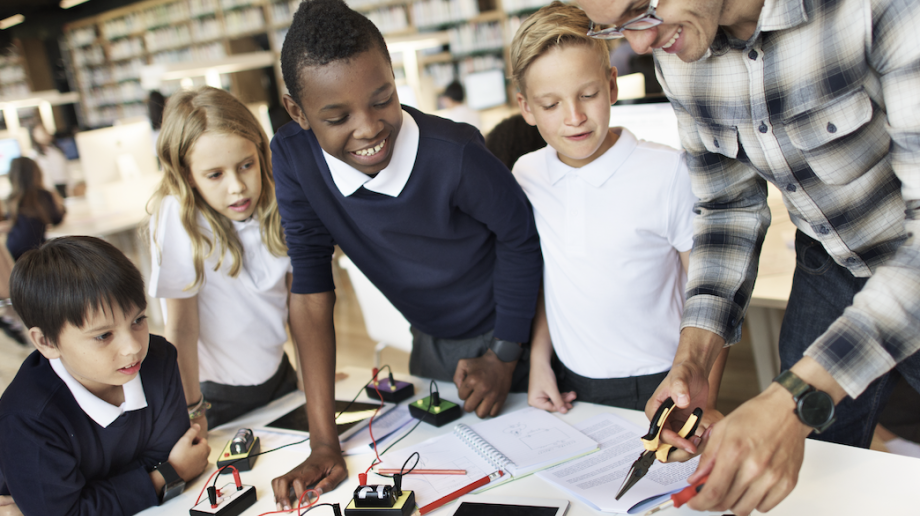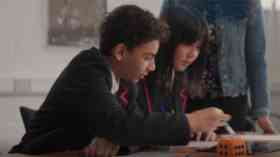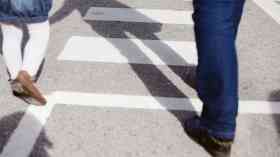
Bringing computing to life
A new free loan scheme from the National Centre for Computing Education has made it easier for teachers to explore the possibilities of using physical computing to bring computing to life. Victoria Temple explains how the scheme works and how students will benefit
Learning computing skills doesn’t have to involve a screen. ‘Getting physical’ and learning to use computer science in real life is a great way to inspire young people.
A new free loan scheme from the National Centre for Computing Education (NCCE) has made it easier for teachers to explore the possibilities of using physical computing to bring computing to life.
“Physical computing is about using a computer or device to communicate with the real world,” explained James Robinson, a physical computing expert at the Raspberry Pi Foundation, one of the NCCE’s consortium partners.
The NCCE’s new physical computing scheme lends classroom kits of Crumbles, Micro:bits and Raspberry Pi 3B+ and Picos to primary and secondary schools across England.
The scheme, launched this term, is backed with NCCE training and lesson plans to enable teachers and students to make the most of the resources. Funded by the Department for Education, the network of 34 NCCE Computing Hubs based at schools across England deliver face-to-face and online support to primary and secondary schools – and now provide classroom sets of physical computing kits.
Dan Elwick, a programme manager at the NCCE, said: “This project is such an exciting opportunity to inspire students of all ages to learn about computing in new and engaging ways by providing kit, content and training for free to schools across England that have not had the budget or expertise to teach physical computing before.
The benefits of physical computing
James Robinson explained more about the benefits of teaching through physical computing:“Physical computing is about using that device to create a real-world output, for example through lights, motors or sounds; or sensing something, such as recording temperatures, measuring humidity, or the distance away from the device.
“Connecting the virtual world with something that is real, physical and tangible can be a real motivating factor for students who are used to purely screen-based programming.”
James explained more about how physical computing can enhance learning. Students might, for instance, use simple electronic components like LEDs and write a program to make a LED blink.
“Once you’ve learned how to make an LED blink, you can move on to adding in E a buzzer, multiple LEDs, or maybe even a motor to create movement,” said James, who started exploring the possibilities of physical computing at after-school clubs ten years ago and has been using Raspberry Pi kit in his classrooms since it was launched in 2012.
“We tried to use the physical computing context quite frequently throughout the GCSE – we learned the concepts we needed to understand for the GCSE but often used a physical computing angle to explore those concepts.”
A powerful educational tool
Enabling students to control real-world objects with computers in ways that are meaningful to them is a powerful educational tool.
Physical computing kits are now available to borrow free of charge from all 34 Computing Hubs based at schools across England. The kits are available as classroom trays suitable for teachers to get started with physical computing at different key stages: Crumble trays for Key Stage 2; Micro:bit trays for Key Stages 2 and 3; Raspberry Pi Pico trays and Raspberry Pi 3B+ trays for Key Stage 4.
The NCCE has produced accompanying guides which detail the resources and training to make the most of each tray, and for those new to physical computing, there are new face-to-face courses to introduce teachers to the Crumble, Micro:bit, and Raspberry Pi Pico.
“Physical computing is very engaging. It’s a concrete experience where learners are interacting with the objects that they are then going to program,” said James.
“Emerging research suggests that physical computing activities help to support learners’ understanding of programming. In an abstract context, it can be quite difficult to understand a program. But when you’re working with something physical, the physical object can provide lots of cues and hints that help you look for clues about which part of the program is making the LED light up.
“Plus, physical computing is a collaborative experience. It gives learners the opportunity to collaborate, and involves them designing and prototyping, as well as connecting with other subjects such as design, science, and engineering. There are definitely opportunities to link with STEM subjects, but also across the curriculum more generally to make interesting and exciting learning opportunities happen.”
The STEM connection
Those opportunities to explore and link engineering, science and computing are also being explored in primary schools, supported by the NCCE’s physical computing kits.
Luke Hammond is a year 5 teacher at Purford Green Primary and is head of computing across three primary schools, teaching computing in every class from year 1 to year 6 across three schools. Luke attended a Crumble training session at Harlow Education Centre and the hub offered Luke a classroom tray to borrow and use in his schools.
Using lesson units from the NCCE’s Teach Computing Curriculum, Luke adapted them to build his own lesson plans looking at debugging with Scratch.
“We’re excited about using the NCCE’s physical computing kits and have shown the kits to the children - they’re excited too. We are going to start teaching with them after half term,” said Luke.
“We are starting with a project with a Year 5 class where they are going to build bridges that open to allow boats to pass through.
“It will allow them to cement what they’ve previously learned from coding. They’ll be building a set of traffic lights and need to make sure that they have the correct sequence. Our computing lessons will be more engaging because they’re going to be able to create a design and see their code working and be able to touch it and feel it.
“Physical computing links with other subjects like design and technology and science. It allows children to learn more than just coding and spread that knowledge across different subjects in the curriculum.”
Luke, and his pupils are excited about the possibilities. They’re not stopping at bridges and traffic lights.
“Our after-school club will be trying to make a car and a merry-go-round. Crumbles give you quite a lot of freedom to be creative, and we’re all set to explore that!”
To find out more about the NCCE’s physical computing kits contact your local Computing Hub via www.teachcomputing.org/hubs.
Latest News
07/01/2026 - 10:10
Solve for Tomorrow is a free, curriculum-linked programme which is mapped to Gatsby Benchmarks 4, 5, and 6, helping teachers embed careers education without adding to workload.
06/01/2026 - 10:24
London's universal free school meals programme has not led to improvements in pupil attainment during its first year, but has eased financial pressure and reduced stress for families.
05/01/2026 - 10:44
New regulations have come into force from today, banning adverts for unhealthy food and drinks before 9pm, and online at all times.
19/12/2025 - 09:54
The Education Committee has expanded its ongoing inquiry into the early years sector to examine how safeguarding can be strengthened in early years settings.
18/12/2025 - 09:25
The UK will be rejoining the Erasmus programme in 2027, following a package of agreements with the EU.







